In retrospect, my attempt to do a SaGa theme month for November was… well, not a bad idea, really, but terribly misguided. Here I was, thinking I’d be able to blow through Romancing SaGa 1, 3, and the heavily SaGa-inspired Legend of Legacy all in the course of a month. Not only did that not happen, but I learned a very hard lesson: SaGa games beyond the initial batch of localized Final Fantasy Legend titles require an intense persistence and dedication on the part of the player. The only way these games reward you is if you’re willing to put a hefty amount of time and effort into learning their weird quirks.
Not only that, but you have to be prepared to mess up. Like, a lot.
So in the time I’d hoped to have completed three games, I wound up kind-of-completing… one. Sort of. Actually, I didn’t finish Romancing SaGa at all. Instead, I got to a point where I realized “Holy crap, going into this totally blind was a real bad idea and I’m gonna start over now that I’ve learned what it is I should actually be doing.”
Yep, you heard me. I’m going to toss all my Romancing SaGa progress out the window and restart again at some point down the line. I’m thinking in… March or so? So consider this Part One of a continuing RS1 travelogue, with a continuation down the line once I’ve played through a few other SaGa titles and had some time to read over guides more thoroughly.1
So, the question is: What went wrong this time through, and what did I learn from it?
Well, one thing’s for sure: the problem wasn’t my character choice! Romancing SaGa lets you start off the game as one of eight characters, and the opening scenario (as well as recruitable characters and places you can access early on) vary based on who you choose. If you know the sort of characters I gravitate towards, my choice should be really, really obvious: Sif, the barbarian warrior woman from the icy lands of Valhalland!
Man, I love Tomomi Kobayashi’s art so much. It’s like 80s-glam meets fantasy in a whirlwind of crazy acrylic colors. Those colors! God, I wish artists would use natural media more. CG coloring just looks super overproduced these days.
Er, ahem! Yeah, Sif was a no-brainer for character choice. Late 80s anime warrior woman? Hell yes, I’ll take plenty of that! (Also: is it just me, or does Sif look closer to Celes’s design in FF6 than Amano’s original artwork for that game does? Hmmm.)
Character creation in Romaning SaGa is actually really cool, as you can determine what kind of build you want your main character to be from the outset by selecting the classes of their parents (each of which grants bonuses and additional growth to certain stats). Since I like to play “glass cannon” characters who hit hard and fast and don’t give a crap about defending, I gave Sif the genes of a martial artist and a thief. Good attack, absurdly high agility, but her starting HP was a fair bit lower than average. Just the way I like it!
Then we get into the adventure itself. Despite the game’s intro telling you about a massive war of the gods and Fatestones and whatnot, you don’t really hear about that at all until much, much later in the game. In fact, Sif’s intro is as bland as can be – it starts with the village chief telling her to go kill stuff (in about as many words), to which she gladly obliges. Then she comes back, and is asked to… kill more stuff. This repeats until you figure out that you have to talk to an NPC in the village after a certain point to get new dialogue and trigger a scene where Sif meets Albert, another hero character. There’s no indication at all that this is necessary to proceed, Sif could likely just be murdering wild dogs forever until you start talking to the handful of villagers out of sheer boredom/desperation. (Fortunately, though I tried to go in as blind as possible, someone warned me about this ahead of time.)
“What? That sounds awful!” you likely just exclaimed. But this is pretty par for the course as far as Romancing Saga 1 goes. This was a very early Super Famicom game, and Square’s first attempt at making a non-linear RPG. In many ways, RS1’s design is interesting and pioneering… but being that this concept was very much in its infancy, there are also a lot of ways in which RS1’s design is obtuse and frustrating.
Quite frankly: this game never, ever tells you exactly what the hell you’re supposed to be doing, and the odds of you finishing it without a detailed guide are slim to nonexistent. You’re going to need to do a bunch of seemingly random quests until, at some point, the story starts to make some progress. Eventually, you’ll hit the endgame triggers, but not until you’ve done a lot of errand work. And fighting.
The obtuseness takes many forms. One big example is how the time progression works. Certain event windows open and close as time passes, but it doesn’t rely on the gameplay clock like you might expect. Instead, the game uses the number of battles you’ve fought as a counter to determine your progress, with some characters starting with a counter further along than others. (You can never see this value unless you’re really good at reading memory addresses in an emulator. I’m also not sure if running from fights counts.)
The problem with this is that, even though this is one of the first Square games to let you see enemies on the map, there are A TON OF THEM in every dungeon and they will do everything in their power to hone in on your X,Y position. Getting stuck in a corridor usually means numerous battles in a row just to clear out the enemies in the way, and running doesn’t erase the enemies from the field, either. So while you probably shouldn’t fight too much, you likely will have to at some points just because you don’t have much of a choice.
Here’s an example of how this can screw you over: There’s a long chain of quests that result in you getting a Moonstone, which you need to cure a sick Emperor in one quest. In order to get everything you need for this quest, you have to:
- Rescue a bunch of enslaved lizard people, which requires recruiting a lizardman party member from a particular pub and following a bunch of very specific triggers to find and locate the slave driver.
- Buy a mystery item from one of the lizard people for 10000G, which is really expensive by RS1 standards. (You also need a specific character in your party, who I fortunately recruited well in advance.)
- Said mystery item allows you to translate a book in a library that’s written in an ancient language. There’s zero indication that this is what it does, you just have to magically figure that out or use a guide. It tells you that the Moonstone to cure the Emperor is in a temple.
- Collect two items to enter this Twinmoon Temple from two people, one of whom was in a place not on my world map. Since places to go only open on the map if certain conditions are met, you need to recruit another character who has the information necessary to open these locations up.
- Finally, you get to enter the temple and hack your way through multiple floors in order to collect the Moonstone.
So guess what happened after I did all this? I went back to give the Moonstone to the Emperor, only to discover that he had magically recovered on his own. This is because during this process, I had hit the number of battles that would close off the quest and make it inaccessible for the rest of the game. Yes, I’d basically gone through all that trouble for a shiny rock that… well, at least it was a good accessory, but I could have traded it for some of the best armor in the game. And I had no idea I’d get shut out of it!
This would be unforgivable by modern game design standards, but by this point in my RS1 playthrough I wasn’t even that upset about it, because in the hours spent playing up to this point I’d become accustomed to this sort of thing. I just had to take my licks and move on. That’s the effect this game – and SaGa in general – has on players: either you learn to put up with it, or you tear the game from the console in a fit of rage, swearing never to touch it again. Granted, many of the later SaGa games aren’t quite this harsh, though they all have layers of obtuseness that will intrigue some and infuriate others.
And that’s the reason I kept on going: despite all the frustrations Romancing SaGa’s semi-open world, non-linear format threw at me, I found the game immensely intriguing. In particular, I really liked some of the new ideas the game introduced to character development and traditional turn-based combat of the era.
See, Romancing SaGa doesn’t have levels like most RPGs do. Instead, what you do in combat has a chance to affect stat growth after the fight ends. If you hit things, your strength might go up. If you get hit, odds are that vitality and HP might increase. Heck, there’s even a chance agility might increase if you run from battle. I’m not sure of the exact algorithms involved – and some characters have growth centered more heavily in certain areas than others – but it makes for a more organic-feeling character building than a typical RPG.
Your party size can be anywhere between one and six characters, which is pretty large! Characters are pretty easy to recruit and replace (you can dump them at a bar if you don’t want them hanging around anymore), and you can equip them with any sort of weapon and magic you like. That’s another cool thing about RS1: Any character can learn any magic or equip any weapon. They might not be good with them, of course – some folks just make lousy mages – but they can learn them, at least!
Since everyone can equip anything, weapon damage becomes tied less to pure stats and more to a character’s proficiency. Weapon proficiency levels up the more you use a particular armament in combat, and weapon damage increases as its level goes up. Raising a weapon level also lets you use special skills tied to the weapons, some of which are extremely good (i.e. Falcon Slash is an early sword skill that goes first in combat no matter what). Magic has its own set of levels for each element (and wow does this game have a lot of elements), making it somewhat harder to level up – you have to use it to raise its level (and thus get more uses), but you run out pretty quickly when you’re just starting out with it. Thank goodness the Romancing SaGa inns are free!
Having a broad set of weapon and magic skills is important, because there are three rows that characters and enemies can be placed into during combat, and these affect what (and even if) enemies can be targeted (and if they can target you). If you’re sitting in the back row, you’re less likely to take hard physical hits, but you’d better have a distance weapon like a bow or magic to attack with. Most melee weapons won’t hit enemies from anywhere except the front row, save for spears (which can hit two rows away), though some weapon skills might. Positioning is key to battle strategy, and you can reposition during battle (at the cost of a character’s turn), but it’s best to set them all before fights begin via the status menu. If enemies attack you from the side or behind, however, your rows will get messed up, so you have to keep that in mind and prepare accordingly. I found that it was generally a good idea to make sure everyone had at least one distance-attacking option and one close-range option just in case.
You always have to be a bit careful when fighting in Romancing SaGa, as enemy difficulty can vary wildly, even within a single area. It’s not uncommon to be trashing waves of easy enemies, only to suddenly run into one that can totally wreck your shit if you don’t hightail it out of there. Fortunately, if somebody gets KOed during a fight, they’ll come back afterwards with 1 HP. This, combined with the ability to save anywhere, actually makes it pretty easy to “save-scum” your way through tougher spots: if your agility is high enough you can take out easier mobs even with everybody at 1 HP, and you can either run or reset from tougher foes. (They changed this up a bit in later games, but I’ll talk about that more when I get to them). Battle in RS1 is ultimately about discretion: knowing when to fight, and knowing when to get the hell out of Dodge and try again when you’ve got more tools to use. (Assuming you’re not being mobbed by a literal nest of spiders in one encounter after another, of course.
It took me a while to learn everything about combat, just as it took me a while to learn about how to advance, how to recruit, and so on. Now I recognize the numerous bad decisions and mistakes I made during the course of my first attempt at playing. That’s part of why I’m starting over: I’m sure Romancing SaGa is a lot more enjoyable from the outset when you know more about how combat, progression, and party management/growth works from the very beginning, instead of going in with a smidge of knowledge and hoping you’ll figure it out along the way. Alas, even though the translated ROM is out there, there’s not much available in English to help people understand this stuff. I’ve mostly been going off of a Japanese guide, which has its own problems with layout and such. Given that my Japanese is merely passable, and RS1’s progression is such a messy web of quests and timing, it’s been difficult to get some of the info I need. (Though honestly, some of this stuff is so precise and not-obvious that I’m not even sure that having things in English would be all that helpful.)
Ultimately, what convinced me to set it aside and start over at a later date was a series of fetch quests where you must retrieve a chain of items for four elemental monsters: from what I can tell from the guide above, it’s possible to screw up the order of taking said quests, which seems to make certain items inaccessible. I could be wrong there, but honestly, I feel like I’m at a point where taking a break and starting fresh later on might be a good idea. The mistakes I made on this early playthrough should serve to make my subsequent attempt more successful.
The fact that I’m even considering doing this at all rather than giving up entirely shows how, in spite of its numerous, dated frustrations, Romancing SaGa won me over. There’s a lot of interesting, experimental design for the era here, and I want to see more of where it goes, even if I do manage to smack into some more dead ends on my next attempt.
I’m still picking Sif, though. I just wish I could change her character theme. It’s driving me bonkers.
- I was offered a copy of the PS2 Romancing SaGa remake, as well, which I’ll likely also play through at some point. ↩
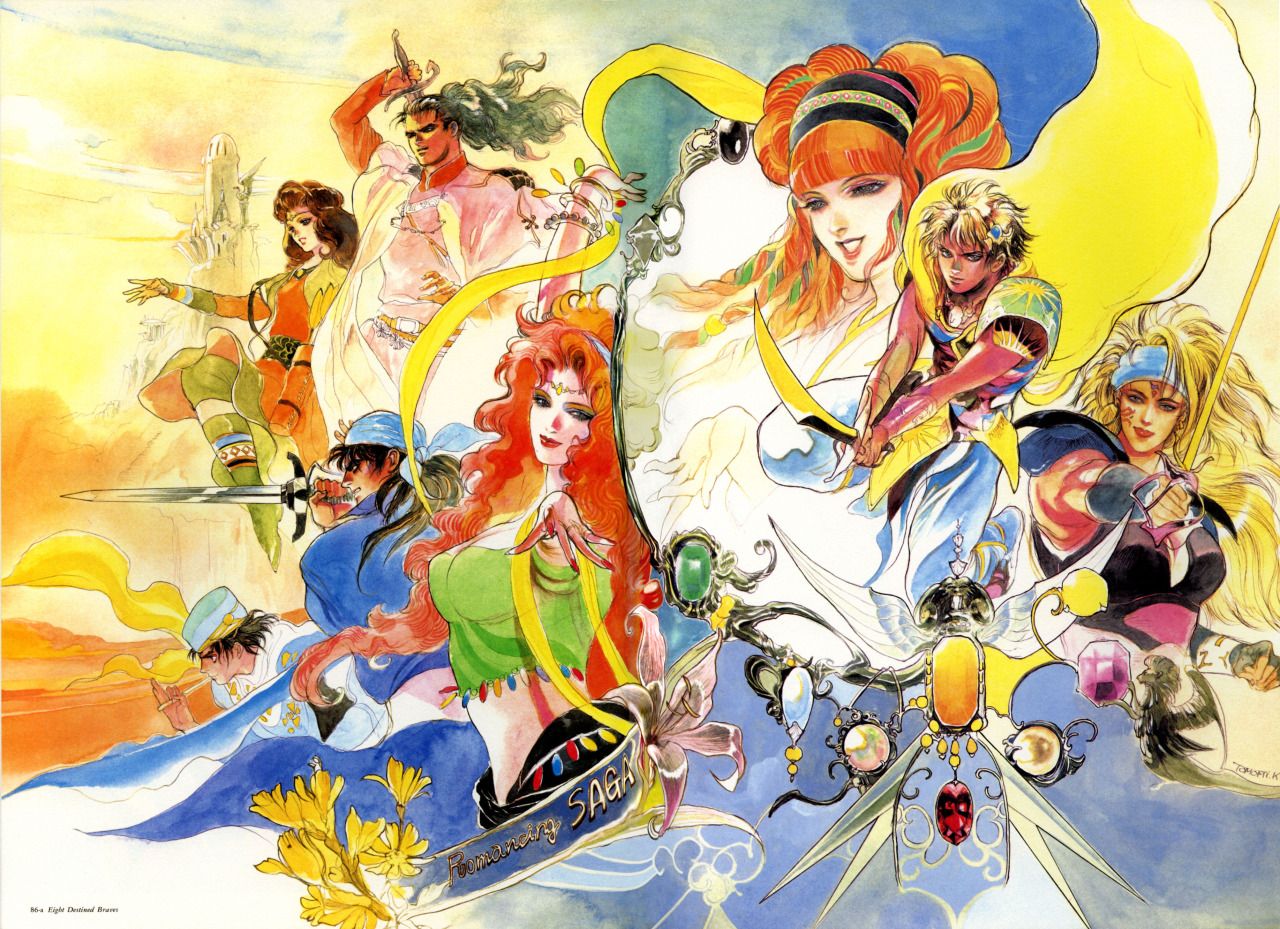
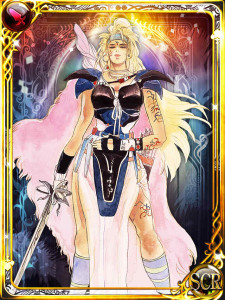
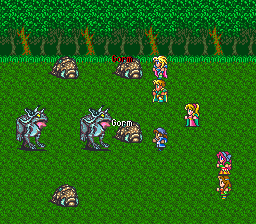
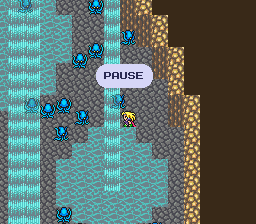
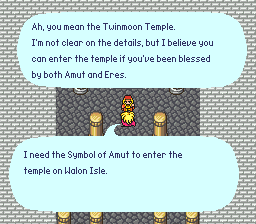
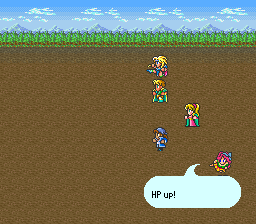

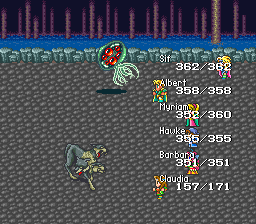
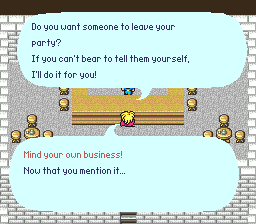
Reading this makes me want to fire up my copy of Romancing Saga. For years, I’d wanted to play it on the SFC but importing stuff back in high school wasn’t an option, so when the PS2 remake came along I pounced on that. (Wound up playing Hawke on my original playthrough)
The obtuseness is strangely endearing to me. Looking back, it seems like an awkward way to get players to interact with the game world a bit more, wandering around, talking to people, soaking in the local color. CRPGs in particular were notorious for this back in the 80s and 90s. It also plays into how this game was refreshingly non-linear, something most folks just don’t associate with JRGs. Saga games were good for bucking this trend, and Romancing Saga in particular always stood out as a good example to this in my books.
Even the “learning by doing” approach to character development is an interesting change of pace. Saga games don’t get enough credit for trying to do something different. Now, excuse me while I invest way too much time replaying this game. >_<
I could have sworn I approved this, yet it’s never appeared until now D:
A way to handle these games, I think (at least from my experience with the third, haven’t played the first one), is to play them at least twice. There’s a good reason you’ve got so many starting characters and even more to recruit.
So your first playthrough WILL be wonky, even with guides. Very random and fate-driven and you’ll miss everything and get stuck at harsh difficulty spikes, and be overwhelmed at the sheer openness of it all. It’ll be a rocky experience, but it’ll be your rocky experience from which you can get a better understanding, which will make a second pass much more enjoyable and sort of your “real” playthrough.
Essentially these are games that are wonky on the surface but become better with each revisit… But this also means you need to invest even more time in them.
Yeah, I’m definitely interested in a replay. I kinda want to check out RS2 on mobile first, though!